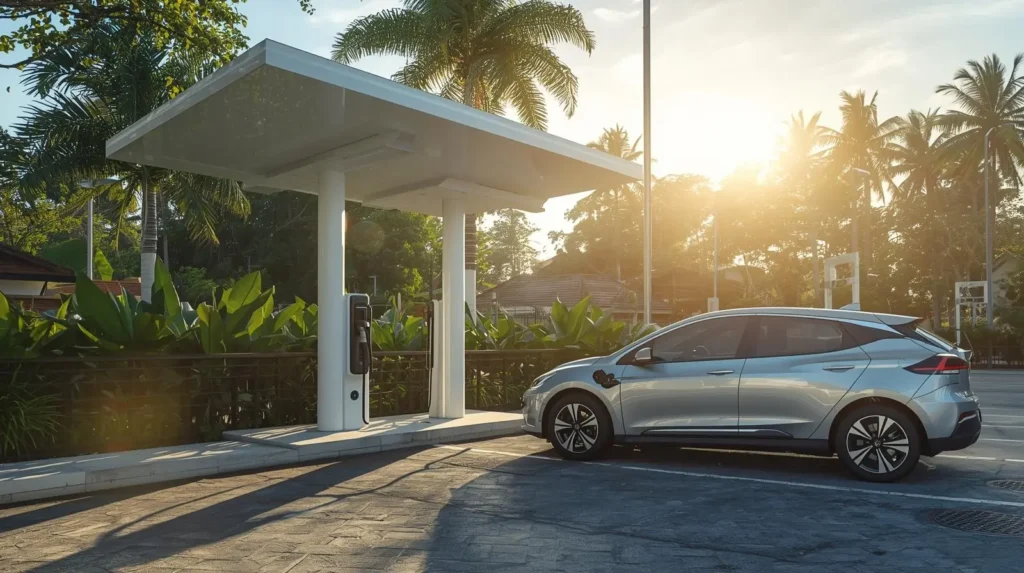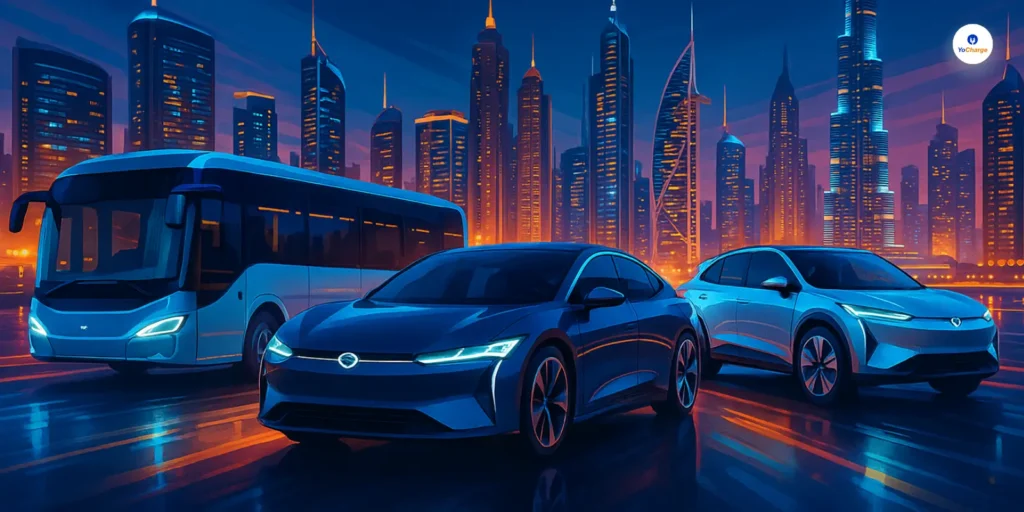
How Does the Combined Charging System (CCS) Work? The Combined Charging System (CCS) is a universal charging method for electric vehicles (EVs). It supports both AC (alternating current) and DC (direct current) charging through a single connector.
A CCS system simplifies EV charging by providing flexibility and convenience for different charging needs. Let’s explore its working, components, advantages, challenges, and future trends.
Overview of the Combined Charging System (CCS)
Combined Charging System is an essential part of EV charging infrastructure worldwide. It combines two charging types: AC and DC—into one connector. It makes it suitable for home charging and public fast-charging stations.
CCS reduces the need for separate connectors, making it easy for EV owners to charge their vehicles anywhere. Its ability to handle both low-power and high-power charging makes it an all-in-one solution for EV users.
Types of Combined Charging System Connectors
Combined Charging System has two main versions: CCS1 and CCS2. Both connectors are designed for compatibility with different regions.
CCS1 Connector
CCS1 is widely used in North America. It is based on the Type 1 plug and includes two DC contacts for fast charging.
CCS2 Connector
CCS2 is popular in Europe and other regions. It is based on the Type 2 plug and includes DC contacts for fast charging.
Both connectors allow efficient charging while ensuring global compatibility for EV users.
Also Read: Understanding EV Battery Recycling
Key Components of the Combined Charging System
The working of the Combined Charging System depends on several essential components. These components work together to provide efficient and safe EV charging.
Charging Connector
The Combined Charging System plug combines AC and DC charging in one. EV users can charge their vehicles at home or at fast-charging stations.
Vehicle Inlet
The EV’s inlet is designed to accept CCS connectors. This makes it compatible with both AC and DC charging.
Communication Protocol
Combined Charging System uses the ISO 15118 protocol for communication. This protocol supports advanced features like Plug & Charge, ensuring easy billing and authentication.
Charging Stations
CCS chargers are equipped for both AC and DC charging. These stations provide power levels suitable for various EV models.
How Does the Combined Charging System (CCS) Work?
The Combined Charging System work involves a seamless process to charge EVs efficiently. It uses AC or DC power depending on the type of connector.
Charging Modes
- AC Charging: The EV’s onboard charger converts AC power from the station to DC power for the battery.
- DC Charging: The station delivers DC power directly to the EV’s battery, bypassing the onboard charger.
Charging Process
- Connection: Plug the CCS connector into the EV.
- Communication: The EV and charger exchange information using ISO 15118.
- Power Delivery: The charger supplies AC or DC power based on the EV’s needs.
- Monitoring: The system monitors voltage, temperature, and charge level for safety.
- Completion: Charging stops automatically when the process is complete.
The working of the Combined Charging System ensures quick and reliable energy transfer, especially with DC fast charging.
Advantages of the Combined Charging System
Combined Charging System offers many benefits that make it a popular choice for EV charging worldwide.
Versatility
CCS supports both AC and DC charging, making it suitable for home and public stations.
Scalability
The system can handle low-power home charging and high-power DC fast charging.
Standardization
By using a universal connector, CCS ensures compatibility across different EV models and regions.
User Convenience
Features like Plug & Charge simplify billing, authentication, and user experience.
Global Adoption
Most automakers and charging networks support CCS, making it a global standard for EV charging.
Challenges Facing the Combined Charging System (CCS)
While CCS is highly advanced, it faces several challenges that need addressing.
Infrastructure Development
Building enough CCS chargers requires large investments. Many areas still lack sufficient charging infrastructure.
High Installation Costs
Fast-charging stations are expensive to install due to the advanced equipment and site preparation needed.
Battery Wear
Frequent use of high-power DC charging can cause battery degradation over time. Better battery management systems are being developed to fix this.
Competition from Other Standards
Other charging standards like CHAdeMO create competition, which can confuse consumers about compatibility.
Despite these challenges, CCS continues to grow as the leading EV charging solution globally.
Future Trends in EV Charging
The Combined Charging System work will improve with ongoing advancements in EV technology.
Ultra-Fast Charging
Stations capable of delivering over 350 kW will reduce charging times significantly.
Wireless Charging
Wireless charging systems will eliminate cables, making charging simpler and more convenient in urban spaces.
Smart Charging Infrastructure
Smart chargers will adjust pricing based on grid demand and optimize energy use during peak times.
Vehicle-to-Grid Technology
Vehicle-to-grid technology allows EVs to send excess energy back to the grid, helping stabilize energy demand.
Renewable Energy Integration
Future CCS chargers will rely more on renewable energy like solar or wind, making them eco-friendly.
Also Read: EV Charging Charges in Different Countries
Conclusion
The working of the Combined Charging System has revolutionized EV charging. It simplifies charging by supporting both AC and DC power with one connector. Its versatility, scalability, and standardization make it a preferred choice for EV manufacturers and users.
While challenges like high costs and battery concerns exist, ongoing research and infrastructure development promise solutions. As technology evolves, the Combined Charging System work will pave the way for a sustainable and accessible EV future.
CCS is not just a charging method; it’s a step toward a cleaner, greener world driven by electric mobility.



